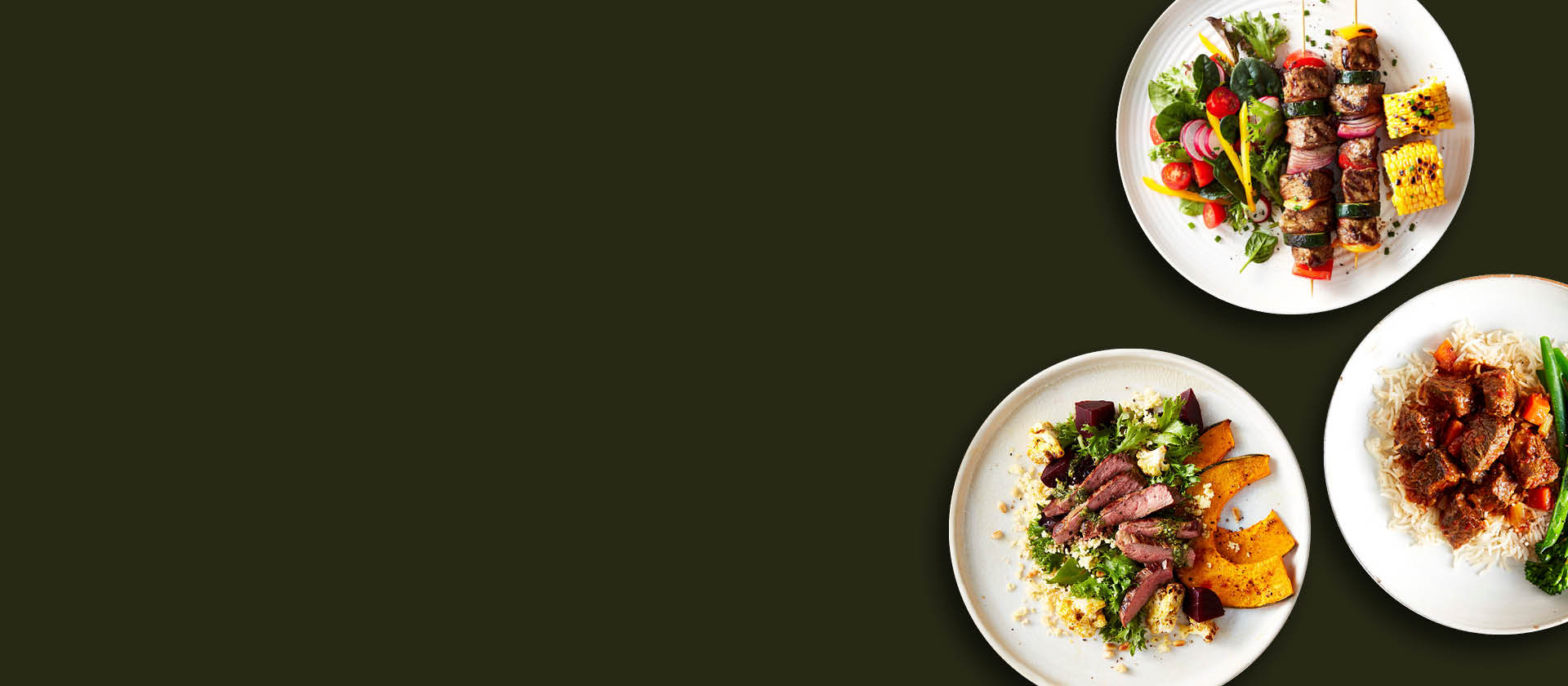As per the Australian Dietary Guidelines, 455g per week of lean and cooked red meat (equivalent to 650g raw weight) is recommended.
Portion size
Eating portion sizes averaging 150g (raw weight) per serve in balanced meals three to four times a week provides amounts recommended for key nutrients and is a great way to enjoy amounts recommended for health and wellbeing.
Boost veggie and fibre intake!
Adding 3 or more different vegetables to red meat meals three to four times a week is a great way to boost low intakes in the Australian diet. Serving meat with legumes provides a good source of dietary fibre, important for gut health.
Want to learn more about the role of red meat in a heathy diet? Find out more here.
Need help finding practical ways to enjoy red meat in balanced meals? Check out our easy-to-understand tips & tricks, designed to make healthy eating simple!
How can I eat red meat in a sustainable diet?
Avoid overconsumption
Almost half the environmental impact of the Australian diet is explained by energy intake highlighting the importance of eating all foods, including red meat, in recommended amounts to avoid the impact of overconsumption on the environment.
Keep to three to four servings a week
Eating red meat three to four times a week in the recommended amounts for health and wellbeing is a practical, and sustainable way to consume red meat.
Don’t waste it
Adopting food safety and storage practices also helps to minimise the impact of food waste on the environment and the household budget. Food waste accounts for 3% of Australia’s annual greenhouse gas emissions and the amount of food wasted is equivalent to $2,000 to $2,500 per household per year.
Check out our 'No Food Waste' fact sheet for digestible tips on shopping smart, food storage and more!
For more information on eating sustainably take a look at our MEBC (make every bite count) report here.

